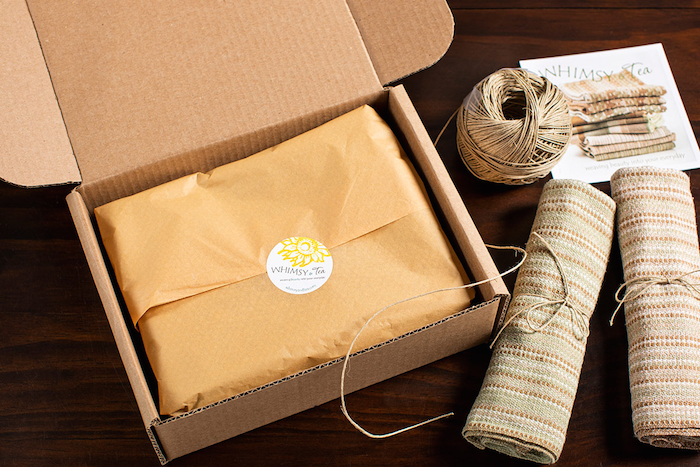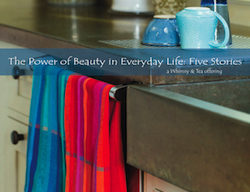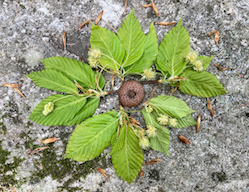Environmental stewardship
Beyond “reduce, reuse, recycle”
Because my decisions as an environmentally conscious weaver and business owner are a part of your Whimsy & Tea purchase, it feels important for me to give you a behind-the-scenes look at my choices and intentions.
The decisions haven’t been as straightforward or as obvious as I expected. I find myself weighing one concern against another, such as the transportation footprint versus the percentage of recycled content.
Theses choices may change over time, and I invite your suggestions.
Materials
- I offer kitchen towels and napkins woven with colorgrown cotton that is sustainably grown in California, Texas and New Mexico.
- Organic cotton sewing thread is used on my serger, and I’m transitioning to use it to hem all of my weaving.
- I don’t add any chemicals. Commercial looms beat at 700/800 beats a minute which stresses the thin threads, so chemicals are often added to strengthen the threads. And many commercial textile producers add chemicals to prevent wrinkling and shrinkage. Again, I don’t use any such chemicals.
Energy conservation
- My floor looms are hand- and foot-powered, unlike commercial looms, which are electric.
- I conserve water by laundering the kitchen towels, napkins and table runners with my own kitchen linens rather than in a separate load.
- I choose to have a home studio, so I don’t drive to get to work.
Recycling and reuse
- I give my thrums (the ends of the warp at the back of the loom that can’t be woven) to my friend Elizabeth for her fiber arts class.
- Sometimes I’ll have an ounce or two of cotton in a color that doesn’t match my other tubes or cones of the same color because they’re from different dye lots. I donate these to my friend Merry for her art therapy work at a local hospital.
- To reduce waste, I reuse the threads for tying my warp chain, for creating straighter hems and for lashing on the warp at the front of the loom.
- The cardboard tubes from the conventional cotton are repurposed in children’s recycled art projects during my mothers’ retirement community’s annual fundraising event.
- The cardboard tubes from the colorgrown cotton get recycled or returned to the distributor.
- I’ve been experimenting with composting my scraps of sustainably grown cotton.
Packaging
- Packaging is recycled, recyclable and, in some cases, reusable – the paper bags, tissue paper, stickers, cardboard shipping boxes and poly bubble mailers.
- The hang tags and documents about my return policy and about colorgrown cotton are printed on paper with recycled content.
Social and community responsibility
- Towels, napkins and table runners are donated to fundraisers – including Ceres Community Project; CISA (Community Involved in Sustaining Agriculture); Waltham Fields Community Farm; Just Roots/Greenfield Community Farm; Conway Festival of the Hills; Town Clock Community Development Corporation.
- On occasion, I raise funds for nonprofit organizations by donating a percentage of my sales. Over the years, those organizations have included CERF+ (Craft Emergency Relief Fund), Ceres Community Project, KIND (Kids in Need of Defense), RAICES (The Refugee and Immigrant Center for Education and Legal Services).



